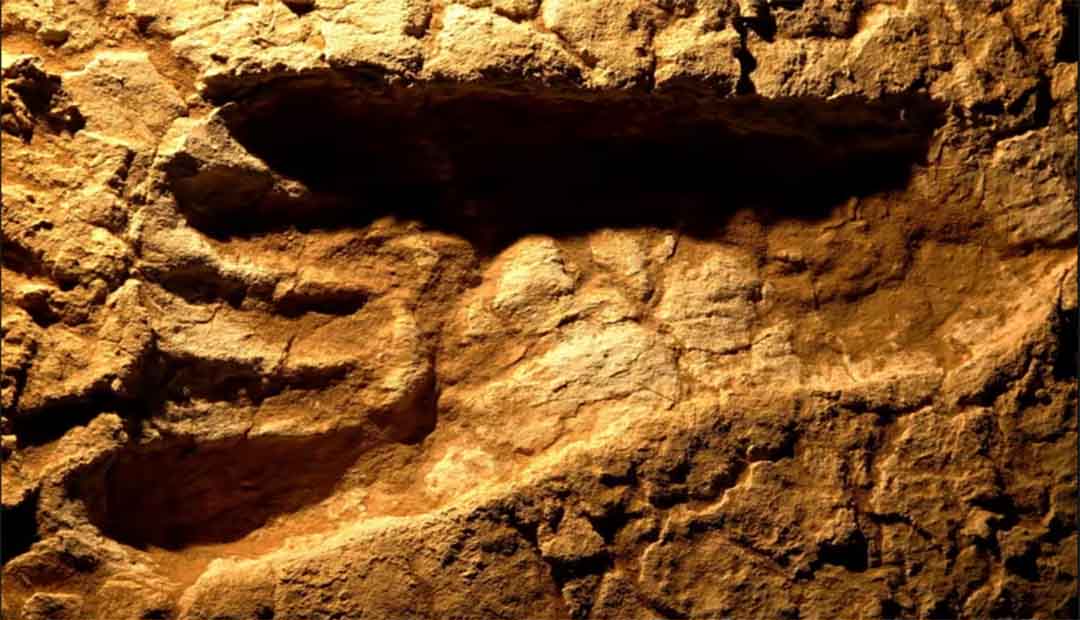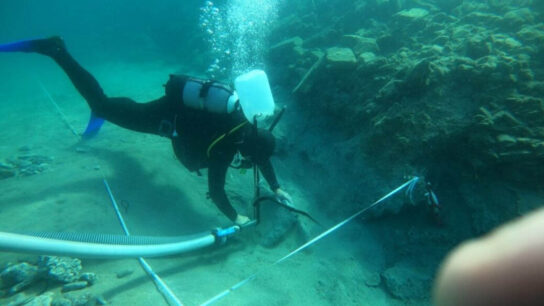Geologist Urges Swift Repatriation of Mungo Man, a 40,000-Year-Old Discovery
Forty years after Mungo Man was unearthed in the dunes of western New South Wales, the geologist who made the discovery is urging the NSW government to speed up repatriation of the remains.
Professor Jim Bowler said the process of returning the remains dated at more than 40,000 years old, whose 1974 discovery confirmed that Indigenous Australians belonged to the world’s oldest continuing culture, had “stalled”, and needed to be “dealt with quickly, and dealt with authoritatively by Robyn Parker”.
Bowler said the World Heritage-listed Willandra Lakes region, where the remains were found, was being improperly managed and could soon “fall into a stage that we would regret unless moves are made to put management into a better, more efficient level of operation”.
It had been hoped that the repatriation would take place in 2014, 40 years to the day since Bowler made his famous find. But obstacles meant it would still be “some weeks” before Mungo Man was returned to the country, he said.
“We’re waiting on the protocols to be worked through. But we’re using the anniversary to highlight the relevance of Mungo Man, and to speed up his repatriation.”
Long-term plans to commemorate the discovery include building a mausoleum near the site, “as we have built for Australian soldiers in Fromelles”, Bowler said. “The remains we hope will be put in a crypt with appropriate dignity, in a place that’s in keeping with their sacred nature and their national and international importance.”
Mungo Man is currently housed at the Australian National University in Canberra, where his remains have been intensely scrutinized. The ancient bones have been Cat-scanned and thoroughly documented at a local hospital.
But the research has long since been exhausted, and Mungo Man now sits “incarcerated in a cardboard box in Canberra”, Bowler said. “The time has come now for the bones to come back to the country.”
Bowler discovered Mungo Man (though some local Aboriginal elders insist it was the other way around) while conducting geological research in the dried-up lake basins of far-western NSW.
The rich sands had, five years before, yielded the 20,000-year-old remains of a woman, dubbed Mungo Lady, whose bones showed signs of ritualistic cremation and burial, evidence she had belonged to a developed culture.
That afternoon, heavy rain had battered the dunes, forcing the geologist to take shelter. When he emerged, he spotted a patch of bone glinting on the shore of a then-unnamed lake. He brushed away the sand to reveal an intact jawbone.
Archaeologists would soon unearth Mungo Man, the oldest skeleton ever discovered in Australia. Dated at 41,000 years old, it more than doubled previous estimates of the length of human settlement in Australia.
Mungo Lady was returned to what is now called Lake Mungo National Park in 1991 and is awaiting reburial.
Bowler said he hoped to forge an agreement with the local Aboriginal people to allow scientists future access to both her and Mungo Man. He was also working to “develop a forum with scientists, Aboriginal people and the community, to discuss the incredible significance of this turning point in Australian history”.
“There will be a national dialogue about the contribution of these remains. They are the iconic foundations for the World Heritage area. They have defined the almost sacred nature of Aboriginal connections with land,” he said.
“It puts the Australian cultural context right at the forefront of the international story of what it means to be human.”
Parker said in a statement: “The NSW Office of Environment and Heritage and the Aboriginal community at Mungo are in discussion about how to best manage the repatriation of remains to Mungo National Park, including those of Mungo Man.
“These discussions and associated planning are now occurring while the current keeping place at Mungo National Park is being upgraded to improve its cultural appropriateness in readiness.
“While we are committed to the repatriation as soon as possible, the decision as to what will occur with the ancestral remains rests with the traditional owners – members of the Mutthi Mutthi, Ngiyampaa and Paakantji tribal groups, and those discussions are continuing.”




